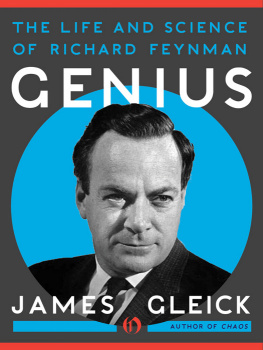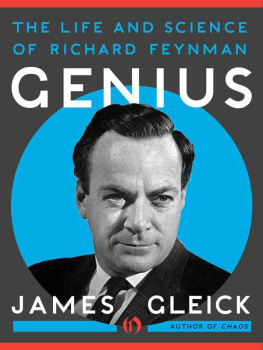All rights reserved. Published in the United States by Pantheon Books, a division of Random House, Inc., New York, and in Canada by Random House of Canada Limited, Toronto.
Pantheon Books and colophon are registered trademarks of Random House, Inc.
Gleick, James.
The information : a history, a theory, a flood / James Gleick.
p. cm.
Includes bibliographical references and index.
1. Information scienceHistory. 2. Information society. I. Title.
Anyway, those tickets, the old ones, they didnt tell you where you were going, much less where you came from. He couldnt remember seeing any dates on them, either, and there was certainly no mention of time. It was all different now, of course. All this information. Archie wondered why that was.
What we call the past is built on bits.
PROLOGUE
The fundamental problem of communication is that of reproducing at one point either exactly or approximately a message selected at another point. Frequently the messages have meaning.
Claude Shannon (1948)
AFTER 1948 , which was the crucial year, people thought they could see the clear purpose that inspired Claude Shannons work, but that was hindsight. He saw it differently: My mind wanders around, and I conceive of different things day and night. Like a science-fiction writer, Im thinking, What if it were like this?
As it happened, 1948 was when the Bell Telephone Laboratories announced the invention of a tiny electronic semiconductor, an amazingly simple device that could do anything a vacuum tube could do and more efficiently. It was a crystalline sliver, so small that a hundred would fit in the palm of a hand. In May, scientists formed a committee to come up with a name, and the committee passed out paper ballots to senior engineers in Murray Hill, New Jersey, listing some choices: semiconductor triodeiotatrontransistor (a hybrid of varistor and transconductance). Transistor won out. It may have far-reaching significance in electronics and electrical communication, Bell Labs declared in a press release, and for once the reality surpassed the hype. The transistor sparked the revolution in electronics, setting the technology on its path of miniaturization and ubiquity, and soon won the Nobel Prize for its three chief inventors. For the laboratory it was the jewel in the crown. But it was only the second most significant development of that year. The transistor was only hardware.
An invention even more profound and more fundamental came in a monograph spread across seventy-nine pages of The Bell System Technical Journal in July and October. No one bothered with a press release. It carried a title both simple and grandA Mathematical Theory of Communicationand the message was hard to summarize. But it was a fulcrum around which the world began to turn. Like the transistor, this development also involved a neologism: the word bit, chosen in this case not by committee but by the lone author, a thirty-two-year-old named Claude Shannon. The bit now joined the inch, the pound, the quart, and the minute as a determinate quantitya fundamental unit of measure.
But measuring what? A unit for measuring information, Shannon wrote, as though there were such a thing, measurable and quantifiable, as information.
Shannon supposedly belonged to the Bell Labs mathematical research group, but he mostly kept to himself.Roosevelt. So now his managers were willing to leave him alone, even though they did not understand exactly what he was working on.
AT&T at midcentury did not demand instant gratification from its research division. It allowed detours into mathematics or astrophysics with no apparent commercial purpose. Anyway so much of modern science bore directly or indirectly on the companys mission, which was vast, monopolistic, and almost all-encompassing. Still, broad as it was, the telephone companys core subject matter remained just out of focus. By 1948 more than 125 million conversations passed daily through the Bell Systems 138 million miles of cable and 31 million telephone sets. The Bureau of the Census reported these facts under the rubric of Communications in the United States, but they were crude measures of communication. The census also counted several thousand broadcasting stations for radio and a few dozen for television, along with newspapers, books, pamphlets, and the mail. The post office counted its letters and parcels, but what, exactly, did the Bell System carry, counted in what units? Not conversations, surely; nor words, nor certainly characters. Perhaps it was just electricity. The companys engineers were electrical engineers. Everyone understood that electricity served as a surrogate for sound, the sound of the human voice, waves in the air entering the telephone mouthpiece and converted into electrical waveforms. This conversion was the essence of the telephones advance over the telegraphthe predecessor technology, already seeming so quaint. Telegraphy relied on a different sort of conversion: a code of dots and dashes, not based on sounds at all but on the written alphabet, which was, after all, a code in its turn. Indeed, considering the matter closely, one could see a chain of abstraction and conversion: the dots and dashes representing letters of the alphabet; the letters representing sounds, and in combination forming words; the words representing some ultimate substrate of meaning, perhaps best left to philosophers.
The Bell System had none of those, but the company had hired its first mathematician in 1897: George Campbell, a Minnesotan who had
In 1943 the English mathematician and code breaker Alan Turing visited Bell Labs on a cryptographic mission and met Shannon sometimes over lunch, where they traded speculation on the future of artificial thinking machines. (Shannon wants to feed not just data to a Brain, but cultural things!or compressed to allow for faster transmission. Logic and circuits crossbred to make a new, hybrid thing; so did codes and genes. In his solitary way, seeking a framework to connect his many threads, Shannon began assembling a theory for information.
The raw material lay all around, glistening and buzzing in the landscape of the early twentieth century, letters and messages, sounds and images, news and instructions, figures and facts, signals and signs: a hodgepodge of related species. They were on the move, by post or wire or electromagnetic wave. But no one word denoted all that stuff. Off and on, Shannon wrote to Vannevar Bush at MIT in 1939, I have been working on an analysis of some of the fundamental properties of general systems for the transmission of intelligence. It had taken on other meanings, though. A few engineers, especially in the telephone labs, began speaking of information. They used the word in a way suggesting something technical: quantity of information, or measure of information. Shannon adopted this usage.













